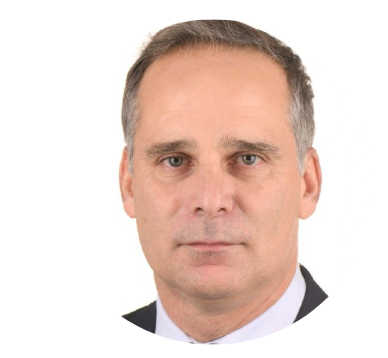Day 1: Wednesday October 15th, 2025
13:00 – 14:00 Registration Opening, Lunch & coffee break
14:00 – 14:15 – Congress Opening by Pierre-Yves Lastic – General Secretary of EFDPO and EHDPC Chairman

This session will explain the data protection issues that DPOs need to be aware of and potentially to approve when AI systems for use by clinicians or patients are being adopted by a healthcare organisation. These issues include checkpoints at the time of procurement and points to be included in service level agreements.
Data protection concerns include the access provided to the AI algorithm from the EHR system and where that processing will take place, including possibly at he patient’s home or at the developer’s site which might be in another country.
Machine learning and AI improvement requires data feedback loops to the developer of the patient level outcome from the AI outputs, which normally needs to be pseudonymised and not anonymised data. The legal basis for these processing steps and flows will be discussed, including the data use and security safeguards to be required of AI developers. DPOs might also need to be involved in the local monitoring arrangements and handling breach and escalation policies related to AI systems.
Transparency and good practice in explainability to patients and clinicians will also be discussed.
14:15 – 16:00 – Opening Plenary Session : Anonymization and pseudonymization in practice
14:15 – 15:15 : Introductory presentations
– Anonymization and pseudonymization case law. Patrice Navarro (Clifford Chance)
-The EDPB 2025 pseudonymisation guidance. Giuseppe D’Acquisto (Italian Data Protection Authority)

Speaker 1
Patrice NAVARRO
Clifford Chance
Paris, France

Speaker 2
Giuseppe d’Acquisto
Italian Data Protection Authority
Roma, Italy
15:15 – 16:00 : Panel discussion
« Navigating EDPB Guidance, Health Data Realities, and Case Law »

Chair
Winnie DONGBOU
MyDataTrust
Paris, France

Panelist 1
Gwendal LEGRAND
EDPB
Paris, France

Panelist 2
Patrice NAVARRO
Clifford Chance
Paris, France

Panelist 3
Michael Will
Bavarian Data Protection Authority
Munchen, Germany

Panelist 4
Giuseppe D’Acquisto
Italian Data Protection Authority
Roma, Italy

Marta Siemaszko
Global Operations Director, Data Privacy Digital and AI
Warsaw, Poland
16:00 – 16:30 – COFFEE BREAK AND NETWORKING
16:30 – 18:00 – Plenary 2 – How will EHDS Health Data Access Bodies anonymise and pseudonymise and synthetize data sets?
The EHDS Regulation extends the legal rights under GDPR to authorise Health Data Access Bodies, appointed by each EU country, with powers to perform anonymisation and pseudinymisation of health data sets in order to make them available for research or other secondary uses. This means that they will be legally permitted to anonymise data sets e.g. from a hospital, that have NOT been de-identified at source. Even if this is permitted under extended GDPR, healthcare providers might need assurance of the capability of HDABs to perform this to a suitable high standard and to give immunity to the healthcare data source for any data breaches or compaints that arise.

Chair
Dipak KALRA
I-HD
Gent, Belgium

SPEaker 1
Daniela will
IAPP – International
Bavières, Germany

Speaker 2
Petra Wilson
Health Connect Partners
Oxford, United Kingdom

Maud DECRAENE
Responsable /Manager for Pôle LEGATO
Juridique, réglementaire & politique données, DPDP
Legal Affairs, regulatory and data policy, DPO
IHU ICAN
Paris, France

Speaker 4
Yacine Daquin
Head of Legal
French HDH
Paris, France
18:00 – 19:00 – ORAL COMMUNICATIONS
18h00 – 18h10 : Navigating Muddy Data-Streams: PETs and EU Data Protection Laws in Secondary Health Data Use
Kartik Chawla, Dayana Spagnuelo, Simon Dalmolen
18h10 – 18h20 : Recommendations for Assessing Re-Identification Risks in the secondary use of Health Data
J Maurer, PHD, S Oesterle, PhD, JL Raisaro, PhD, K Kalt, M Egli, PhD, J Kiss Blind, J Armida, PhD, TR Geiger, PhD
18h20 – 18h30 : Health Data as a weapon : Addressing Group-Level Risks in an era of Expanded secondary use
Author: S Pandit (FIP).
18h30 – 18h40 : AI-POWERED Anonymization and pseudonymization to enhance healthcare data Security
Baka DIOP, CIO, Global Ambassador AI for France, Multiaward nominee, Top women in cybersecurity worldwide, CEO Stealth AI
18H40 – 18h50 : From raw to synthetic : Enabling Privacy Enhancing data sharing in the european health data space

Chair
Dipak KALRA
I-HD
Gent, Belgium

Pierre-Yves Lastic
General Secretary of EFDPO
Paris, France

SPEAKER
Kartik chawla
TNO
Eindhoven,Netherlands

SPEaker
Dayana SPAGNUELO
TNO
EINDHOVEN, NETHERLANDS

SPEaker
SImon DALMOLEN
CJIB
Groningue, NETHERLANDS

SPEaker
Shachi PANDIT
ROCHE
London, UK

Speaker
Jonathan MAURER
PHD Analytical &
Clinical Chemistry
Neuchaâtel, Suisse

SPEaker
Sabrina OESTERLE
ASU
Arizona, USA

SPEaker
Jean-Louis RAISARO
CHUV
Lausanne, Suisse

SPEaker
Laurewce CARTER
DPO CENTRE
Letchworth, Royaune Uni

Speaker
Michaela EGLI
PHD
Biel, Switzerland

SPEaker 2
Jan ARMIDA
SIB
Lausanne, Suisse

SPEaker
Judit KISS BLIND
SPHN
Bale, Suisse

SPEaker 4
Baka DIOP
CIO
USA
19:15 – 20:30 – COCKTAIL AND NETWORKING at CLIFFORD CHANCE Headquater
1 rue d’astorg 75008 Paris
Shuttle BUS leaving at 19H15 in front the musée de la marine.
